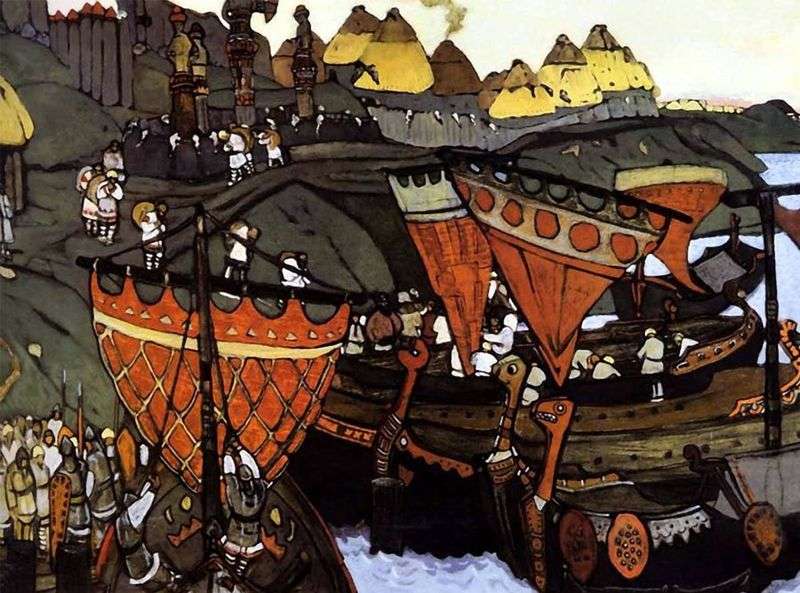
The painting “Slavs on the Dnieper” from the series “Beginning of Russia. Slavs” was written in 1905. During this period, the artist worked intensively on paintings from ancient Russian history.
On the steep bank of the Dnieper there are painted boats ready to sail with fancy carvings. Raised heavy, as if carved from wood, sails. There is a business-like loading of goods.
At the very edge of the water lined up armed warriors, landing in a special boat, designed to protect ships. High above the river in the temple are many people crowded around idols. They ask for protection and help from their harsh gods, they pray for their relatives who are going on a long and sometimes dangerous journey full of surprises.
In the distance, against the background of a narrow strip of sky, the haze of the unsophisticated dwellings of a southern Slavic tribe is warming. Convincingly alive, combining the knowledge of an archeologist and a historian with the fantasy of a painter-poet, Nikolai Roerich portrayed the everyday working life of our ancestors – Rusich.
A small canvas of Roerich is perceived as a significant monumental work. The artist uses the harmony of rich sonorous pure colors: red, green, ocher-yellow; clearly draws the contours of objects. The composition unfolds up the plane of the picture, obeying a strict calm rhythm.
In the 12th century Russian chronicle it is said that since ancient times the banks of the Dnieper River were inhabited by the Polyan tribe: “They had their own customs and laws of their fathers and traditions.” The picture shows one of the sides of the life of the pagan Slavs – the collection of tribute to the princely retinue.
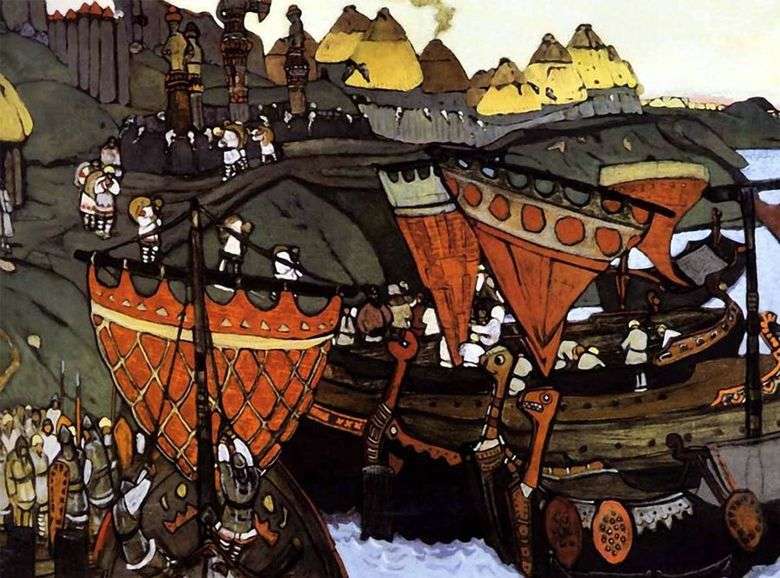 Eslavos en el Dnieper – Nicholas Roerich
Eslavos en el Dnieper – Nicholas Roerich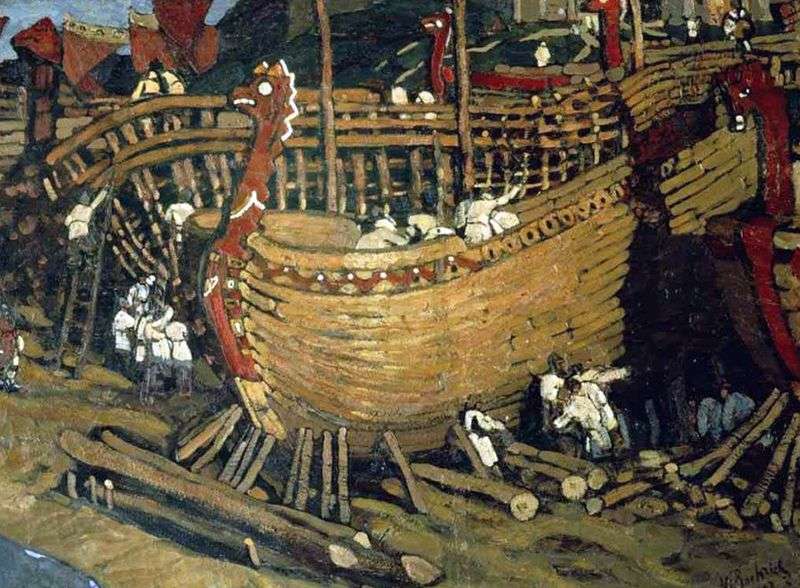 They build rooks by Nikolai Roerich
They build rooks by Nikolai Roerich And open the gate by Nicholas Roerich
And open the gate by Nicholas Roerich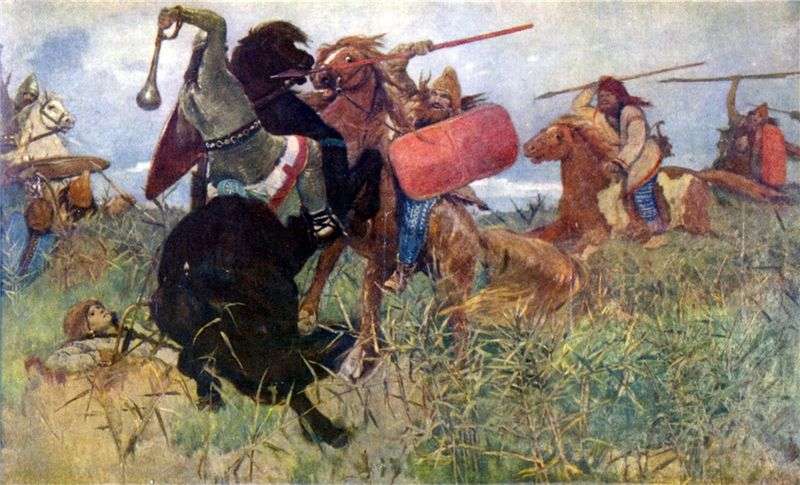 The Scythians fight with the Slavs by Victor Vasnetsov
The Scythians fight with the Slavs by Victor Vasnetsov Saint Sergius of Radonezh by Nicholas Roerich
Saint Sergius of Radonezh by Nicholas Roerich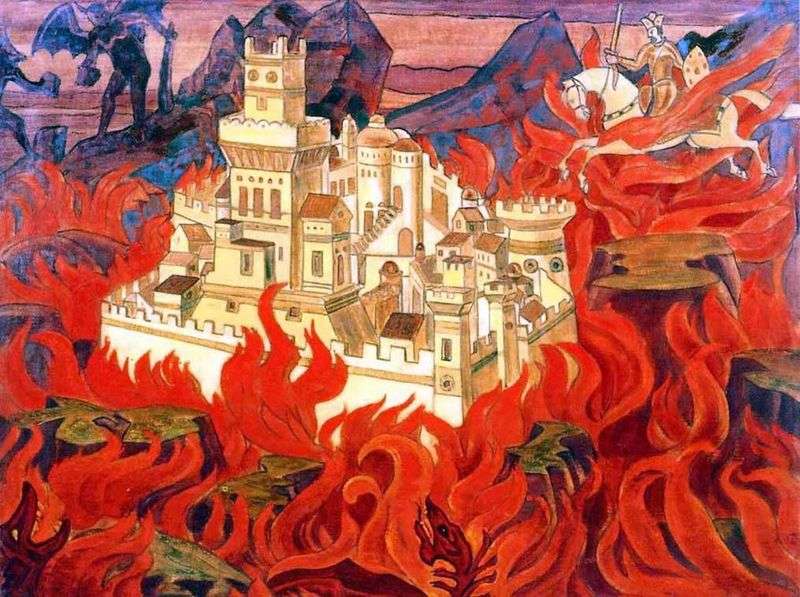 Purest Hail by Angers to Enemies – Nicholas Roerich
Purest Hail by Angers to Enemies – Nicholas Roerich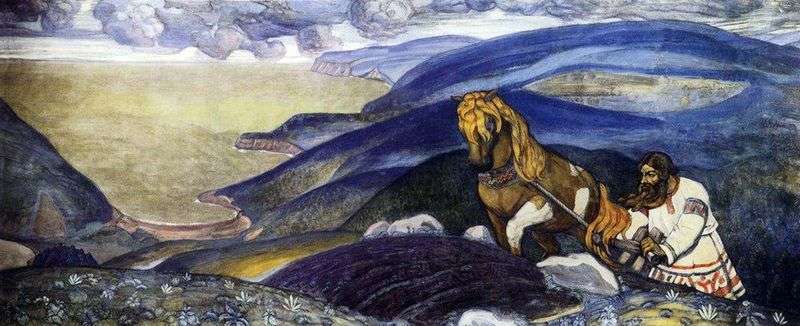 Mikula Selyaninovich by Nicholas Roerich
Mikula Selyaninovich by Nicholas Roerich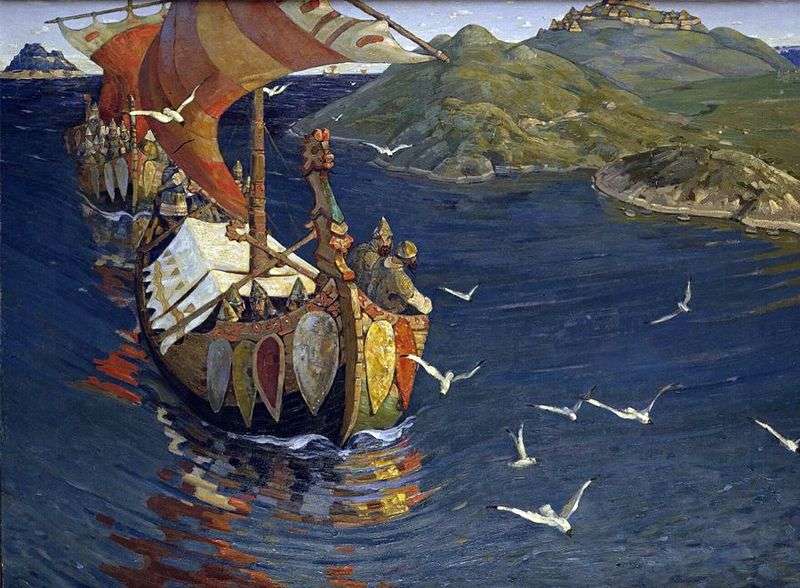 Overseas guests by Nicholas Roerich
Overseas guests by Nicholas Roerich